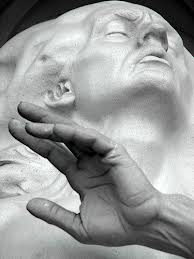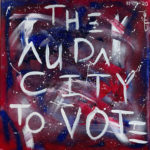By Reed V. Horth, for Robin Rile Fine Art
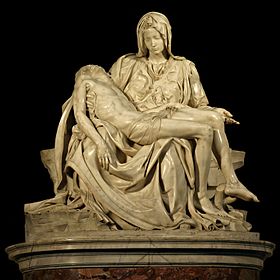
Michelangelo was 24 years old when he completed his “Pietà” in 1499. Oh, if only I were so accomplished by the same age.
Michelangelo (Michelangelo di Lodovico Buonarroti Simoni, 6 March 1475 – 18 February 1564) installed his most perfect sculpture within the Vatican walls in the dead of night, helped by laborers who refused payment as they felt blessed to place such a masterpiece. Unsigned, Michelangelo later snuck back into the Vatican one evening, chiseling his signature on Mary’s sash after horrifyingly overhearing visitors remark that his
“Pieta” was the work of Cristoforo “The Hunchback” Solari.
Uncouth and brash, Michelangelo was the epitome of the Gifted Deviant.
For 12 years, I worked in galleries featuring a modern day sculptor whose work garners comparisons (rightly or wrongly) to those of Michelangelo. The artist is named Frederick Elliot Hart (1943-1999). In developing my sales presentation, I discovered that when I mentioned the artist’s monuments, my audience had a hidden familiarity with the artist. The “Three Soldiers” at the Vietnam Veterans Memorial in Washington DC was the easiest image to conjure for most of our visitors. This familiarity allowed me to segue into a presentation about the artist which hopefully, would inspire them to own one of his works. The sculpture people were most impressed with during my presentation was the full-sized clay modele for Hart’s “Ex Nihilo” for Washington National Cathedral. The swirling mass of 4 male figures and 4 female figures stopped people in their tracks. If that did not inspire respect, nothing would. Hart was ahead of his time, brash, confident and a rebel in his own right.
In some respects, Hart could be considered an “infant of the same species” as Michelangelo.
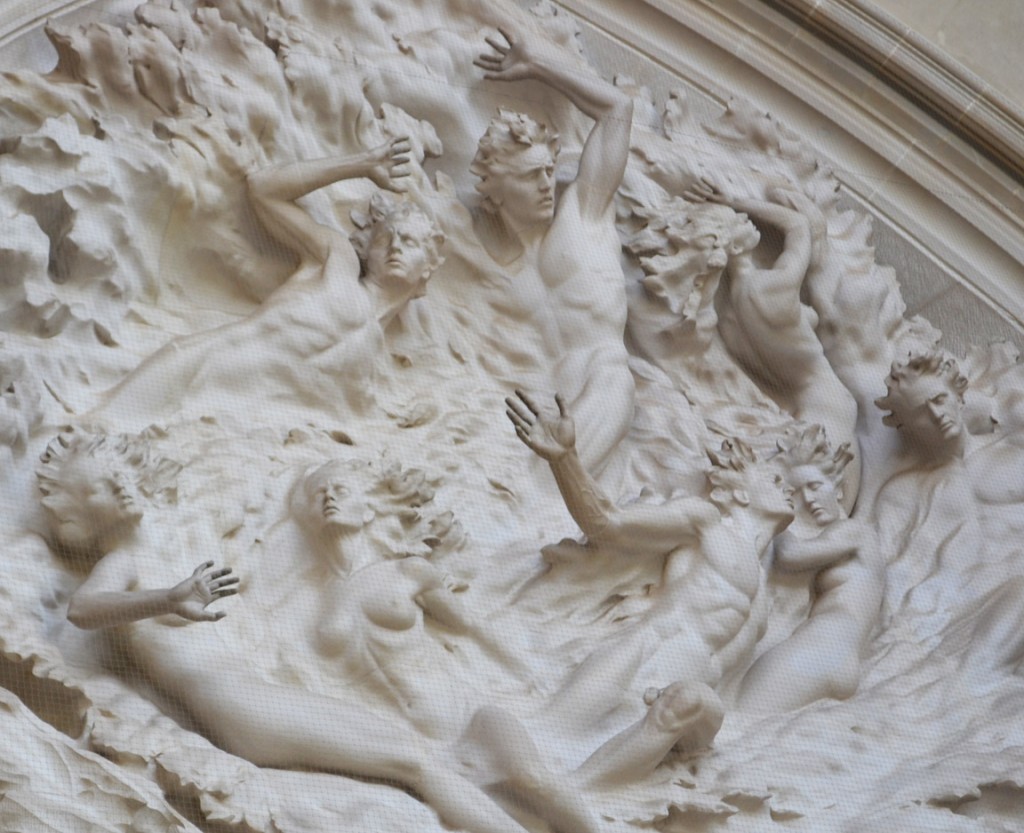
17 years after my initial introduction to the work of Hart, I finally visited Washington National Cathedral in Washington DC on a pilgrimage to see the subject of so many presentations, speeches, articles and emails, “Ex Nihilo”. As I slid off the bus which took me the short distance from the Red Line Metro station at Tenleytown, twin cathedral spires dawned from behind a tremendous oak tree. The world’s 6th largest cathedral was coming into view in the dewy morning light. As I approached a powerfully-built, but still spritely, docent ushered a group of 7th graders to the West façade. As he began speaking about the cathedral he mentioned Frederick Hart, so I sat down to have a listen. Despite that fact that I have lectured and written on the subject of Hart for nearly 20 years, there is always something to learn. The docent, who I would come to know later as Andy Bittner, spoke of Hart by the name his friends called him… “Rick”.
Rick, a troubled teen from Atlanta was kicked out of school at 13 but still was able to matriculate to University of South Carolina to continue his studies. When he later marched for civil rights, the Ku Klux Klan took a contract on his life, so he fled to Washington DC, finding a home as the “Mayor of DuPont Circle” due to his ebullient personality and effusive wit. Hearing about Washington National Cathedral and having a burgeoning talent for meeting girls using his skills as a sculptor, he found his way to the same Tenleytown stop I did.
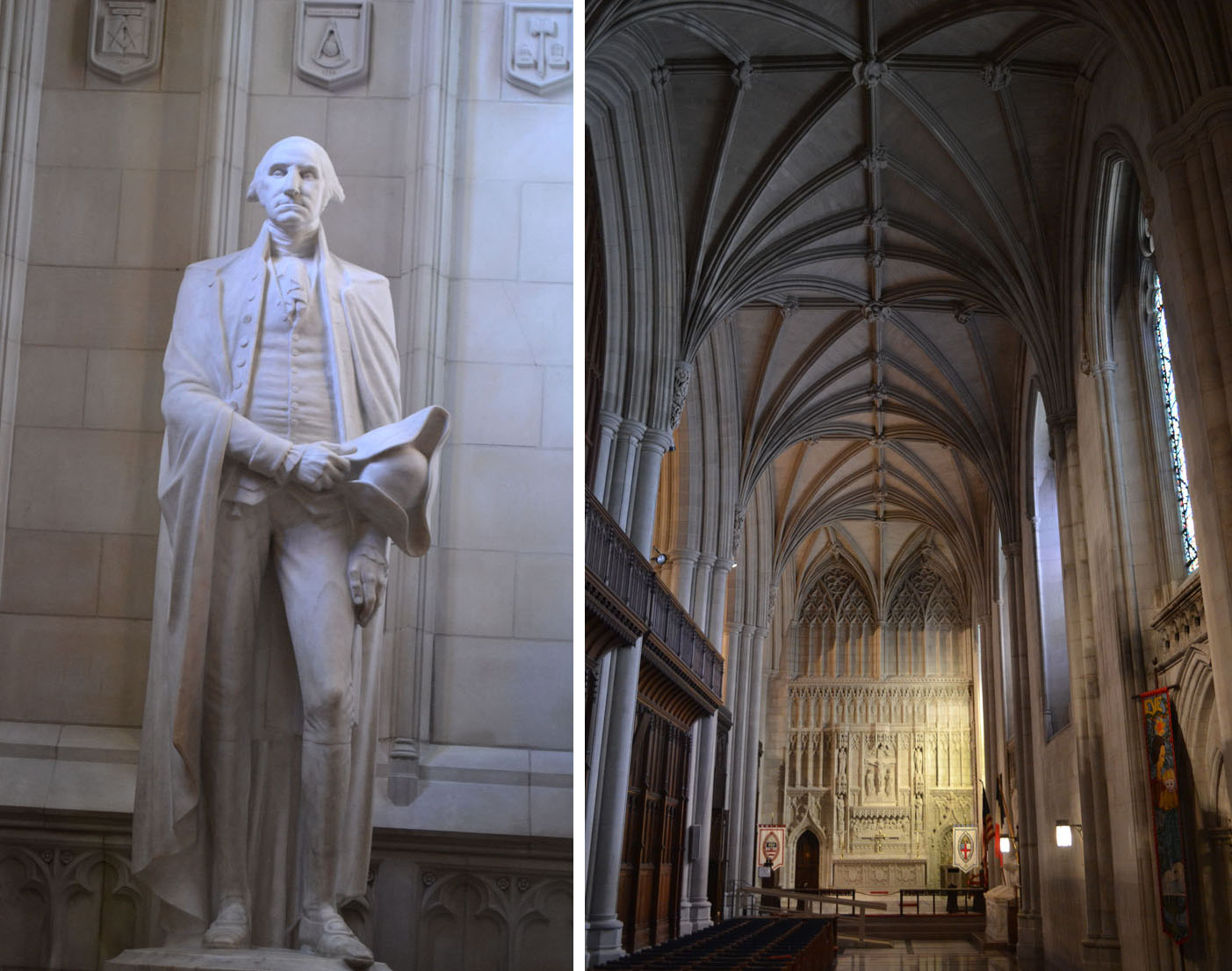
The plan for the Cathedral was originally proposed by George Washington himself on 4 January, 1792, in The Gazette of the United States, Philadelphia. “A church intended for national purposes,” he wrote, “assigned to the special use of no particular sect or denomination, but equally open to all”. While the plans languished until 1891, they were re-purposed and a site was chosen on Reno Hill overlooking the city of Washington. Ground broke in 1907 during a ceremony presided over by President Theodore Roosevelt. The cathedral was metaphorically an “Infant of the same species” compared to the Gothic Cathedrals of Europe which inspired its architecture, theme and detailing. Hart felt an overwhelming sense of spirituality when he walked through the doors for the first time. After a long and deliberate study, he converted to Catholicism shortly thereafter (despite the fact that the Cathedral is Episcopal) . As Tom Wolf described in his posthumous biography of Hart, “The hot-blooded boy’s passion, as Hart developed his vision of the Creation, could not be consummated by Woman alone. He fell in love with God. For Hart, the process began with his at first purely pragmatic research into the biblical story of the Creation in the Book of Genesis. He had been baptized in the Presbyterian Church, and he was working for the Episcopal Church at the Washington National Cathedral. But by the 1970’s, neither of these proper, old-line, in-town Protestant faiths offered the strong wine a boy who was in love with God was looking for. He became a Roman Catholic and began to regard his talent as a charisma, a gift from God. He dedicated his work to the idealization of possibilities God offered man“. (The Artist the Art World Couldn’t See, by Tom Wolfe, New York Times Magazine, January 2, 2000)
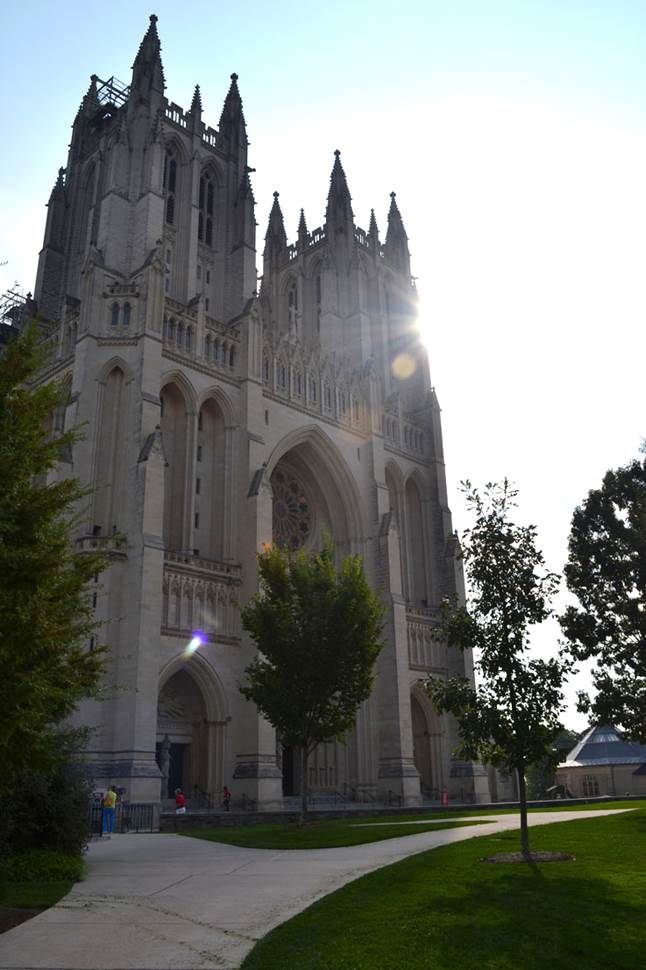
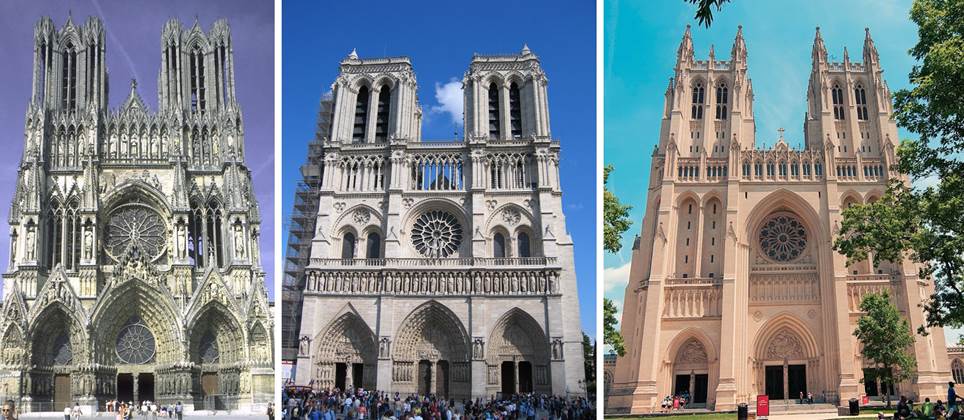
Throughout the 1970’s, Hart labored under the tutelage of the Italian stone-cutting masters Roger Morigi (1908-1995) and the jovial Vincent Palumbo (1936-2000) in the lost style of the ancient stone carvers. (The book “The Stone Carvers” by Marjorie Hunt and corresponding Academy Award-winning documentary highlight their work and enigmatic personalities) A quick glance at most modern buildings will reveal the lack of ornamentation which was hallmark of architecture throughout history and moving into the Beaux-Arts styles of the 1930’s and 1940’s. Since that time, stone has been used less and less in favor of steel, glass and modern materials, thereby decreasing the demand for stone carvers of Hart’s ilk. However, under the tutelage of Morigi and Palumbo, Hart learned of the competition to design the tympanum above the main doors of the Cathedral’s West façade. Hart chose the theme of creation, but not with the same sensitivity of subject as Michelangelo applied in his “God Creating Adam” in the Sistine Chapel. Instead, Hart drew inspiration from the writings of Jesuit philosopher and theologian Pierre Theilhard de Chardin who, in his treatise “The Divine Milieu” posited that “Someday, after we have mastered the winds, the waves, the tides and gravity, we shall harness for God the energies of love. Then for the second time in the history of the world, we will have discovered fire….[and] Driven by the forces of love, the fragments of the world seek each other so that the world may come into being.” Hart’s original maquette called upon several elements in the natural world, fire, rain, stone, wind to create his Adam and his Eve “Ex Nihilo” (Out of Nothing).
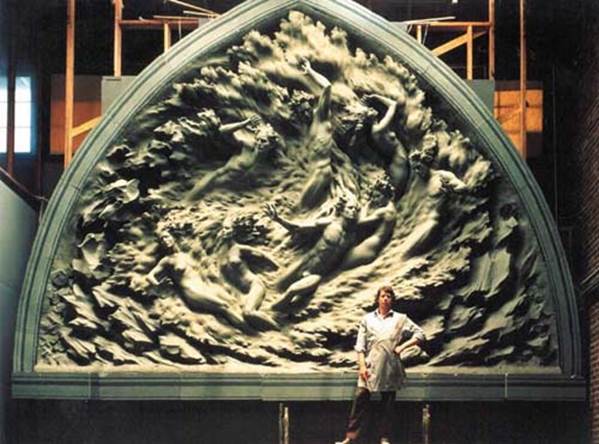
Birth is a painful process. A fitful sleep, only to reawaken for another moment of creation… Dawn. Hart’s Adam and Eve struggle and writhe in a pullulating morass of tarry elements Hart described as a “primordial cloud”. Though their bodies are partially articulated and powerful, their essence is still formative. Silently, they grasp at dawn through the chaos for formation. Perhaps this is Hart’s allegory for all life.
Hart’s work, bears a spiritual, if not thematic kinship to French master Auguste Rodin’s most important creation, La Porte de l’Enfer (The Gates of Hell). This is due in part to the fact that both were sculpted in high relief contraposto and consisted of restrained forms in varying forms of activity through a quagmire from which they cannot escape. However, where Rodin’s figures are tortured without hope, Hart’s anguished Adam and Eve seem uplifted and confident. The unified whole, carved by Morigi and Palumbo from Indiana limestone using techniques and division of labor derived from the stone carvers of old, allowed Hart to birth his own renaissance of sorts. His sculpting, combined with the tutelage and expertise of his mentors, made the lost art of stone carving interesting again. Not unlike his sculptural antecedents Michelangelo and Rodin. Hart again proves himself to be an “infant of the same species”.

“He is the old Adam”, Hart says,
“[a] figure emergent from chaos, shaped by the potter’s hand,
the passion and the zenith of creations…
He is also the new Adam, emergent, radiant in light.
He is at once absolutely concrete and absolutely universal.”
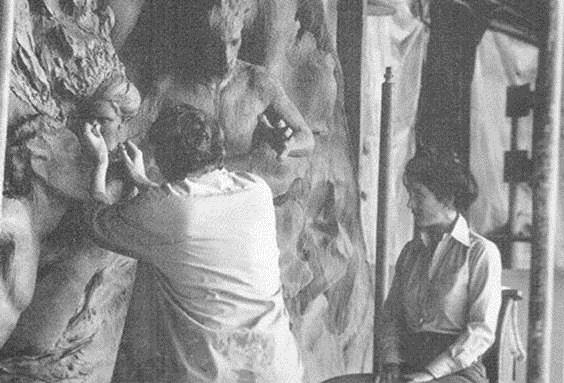
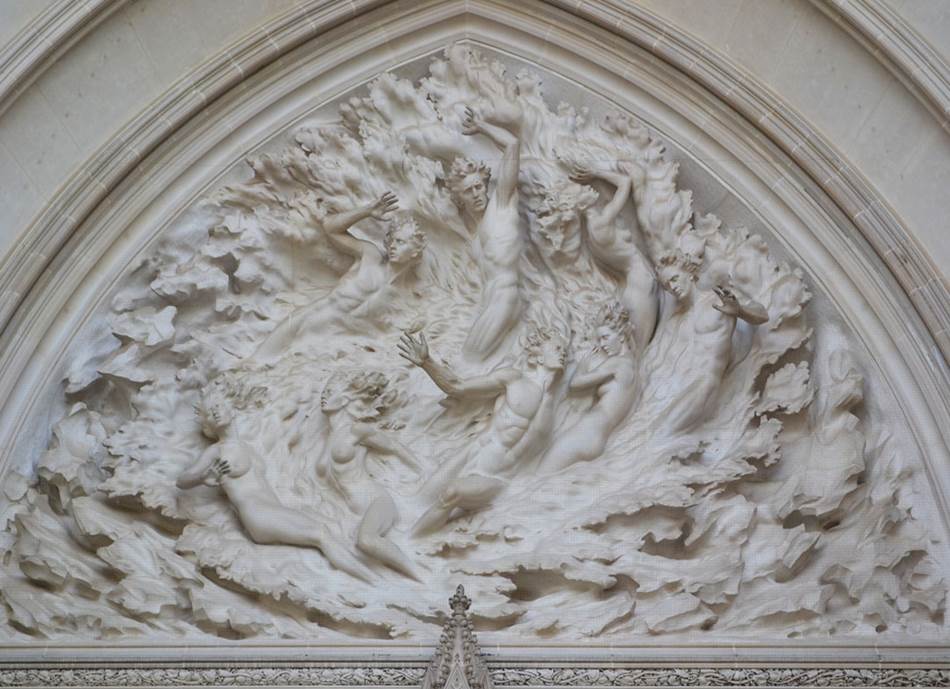
Our diminutive docent, Irma Stockton, kindly lead a small group of us through the nooks and crannies of the cathedral, pointing out interesting morsels of information on the construction, from the significance of specific windows, bosses and markings, to the belfry where we saw the skeleton of the upper knave arches. She explained that the cathedral was designed in the 14th Century English Gothic style and that it is the highest point in Washington D.C., higher even than the Washington Monument because of its location atop Reno Hill (the highest natural point in the District of Columbia at 409ft above sea level). She led us through the narrow mass with an eight bay knave and six bay transept, pointing out various items of interest in stone, stained glass and wrought iron artistry throughout.
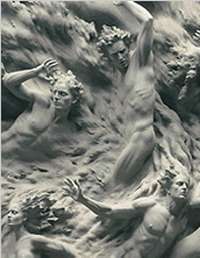
Despite breaking ground in 1907, it was not finished until I was a senior in High School.
After thanking Mrs. Stockton for her time, I reemerged from the Cathedral into the midday light. With this, I too went from a waking sleep into a dawn of my own. Repositioning myself again in front of “Ex Nihilo” I truly gained insights into Hart and the reason for my pilgrimage. The cathedral holds a power and majesty that was not easily summed up in words. Despite its relatively young lineage, its breathtaking scale and impeccable detail reminded me that there were masters of old walking among us. Craftsmanship bordering on the great Renaissance masters is lost on us now, and we are poorer for it with each passing year.
I caught back up with docent Andy Bittner and introduced myself. He took a few moments to impart some of the stories previously mentioned as well as his own formative years at the Cathedral, first as a wayward and free-thinking youth seeking the meaning of life, then later as a patron and docent. In his laid-back, but friendly and enthusiastic drawl, he conveyed that his adventuresome youth was spent exploring nooks and crannies of the magical structure as his parents lived and worked in the greater DC area. (In fact, his father was the “tenor drummer in the Washington Scottish Bagpipe Band, who played in the annual Kirkin’ o’ the Tartan service (the blessing of the Scottish clans in America)” at the Cathedral. After several years of self-described “adventurous, but limiting, decisions“, he returned to its hallowed halls and had a life-altering epiphany. Just as Hart before him, he dedicated his life to the Cathedral and its history. Andy was kind enough to share a broad spectrum of stories, from bona fide miracles, to mysterious coincidences and the humorous deviancy the masons and stone carvers caused in their decades working at the Cathedral. Anecdotally he explained one of the most deviant characteristics of the exterior structure was a protuberant bust of Darth Vader which adorns the Northwest tower. A competition amongst schoolchildren in the 1980’s to design gargoyles for the Cathedral yielded a winning design of the Star Wars villain. The design was then sculpted by Jay Hall Carpenter and carved in Indiana limestone by Patrick J. Plunkett.
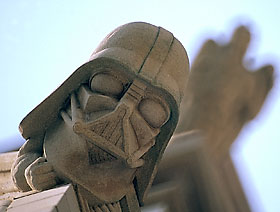
Perhaps it was Andy’s encyclopedic knowledge of the structure or a truly divine moment which inspired him to become a permanent fixture at the Cathedral. Perhaps it was more. One common thread struck me as I listened to Andy speak about the Cathedral; that of deviants finding their way. After all, Andy did. So did Michelangelo and Rodin. So did Hart. To some extent, so did I. Is this what Andy meant by “infants of the same species”? Perhaps. Perhaps it is because this structure was, as Washington himself intended, “equally open to all”.
Including we deviants.
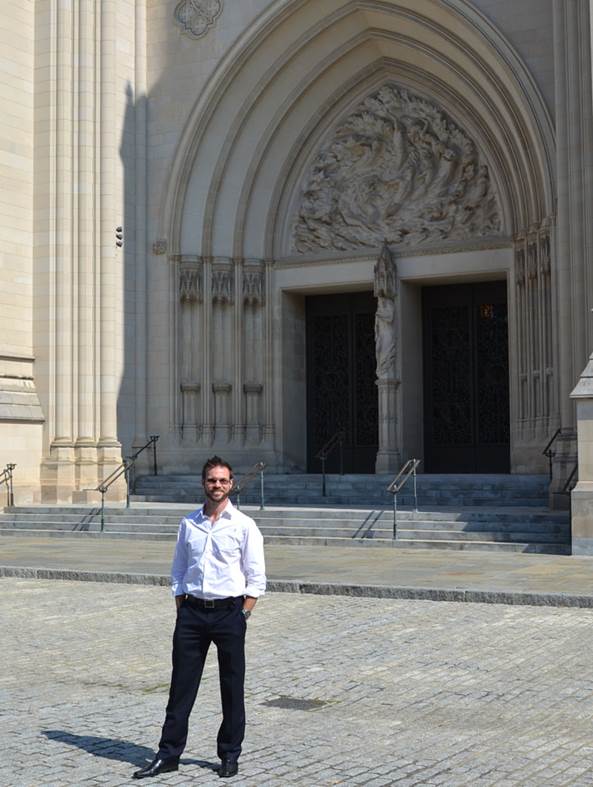
FOOTNOTE: Of the many stories Andy Bittner conveyed during our discussions, one series resonated. On 23 August, 2011, a 5.8 magnitude earthquake struck the Washington D.C. area causing significant damage to the Cathedral and its varied structures. On 26 August Hurricane Irene further exacerbated efforts to shore up the structure and caused further damage to the cathedral. On September 7, 2011 a 350 foot crane working to shore up the Cathedral in light of the recent damage, collapsed. Days later, on 11 September, 2011, was to be the 10th Anniversary memorial of the September 11th attacks in Washington and New York. President Barack Obama as well as many heads of state, Senators, Secretaries, dignitaries and heads different religions from around the world were to converge on Washington National Cathedral on that date. Security around D.C. was airtight, but threats were always rampant and fears remained high. Andy maintains that these “Acts of God” served as a warning. The memorial was moved to the John F. Kennedy Center for the Performing Arts. Despite an extended series of dramatic disasters, no one was egregiously hurt. No villainy took place. Perhaps, he thought, this is BEST example of God’s benevolence.
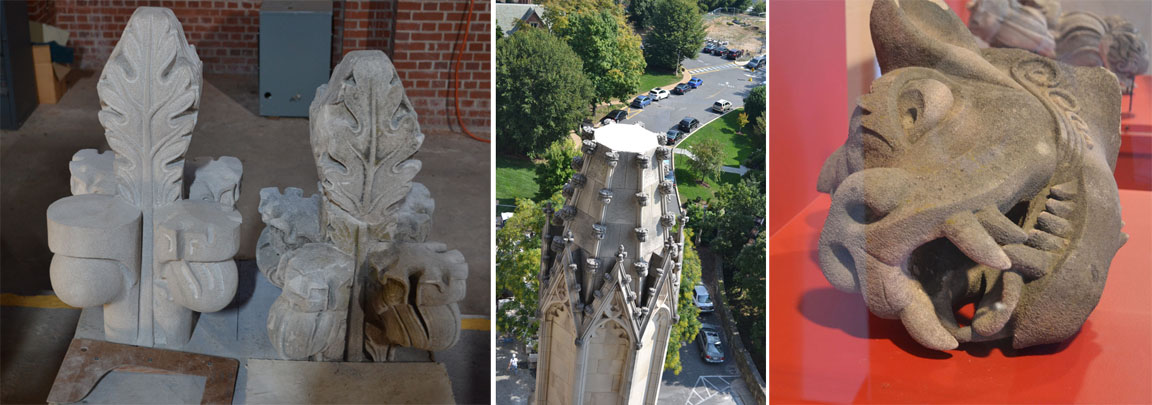
For more on the restoration efforts ongoing at the Cathedral, please see http://www.nationalcathedral.org/dcquake/
Reed V. Horth, is the president, curator and writer for ROBIN RILE FINE ART in Miami, FL. He has been a private dealer, gallerist and blogger since 1996, specializing in 20th century and contemporary masters. www.robinrile.com
All content ©2014 ROBIN RILE FINE ART. Any unauthorized reproduction of images, text or content is strictly prohibited.
